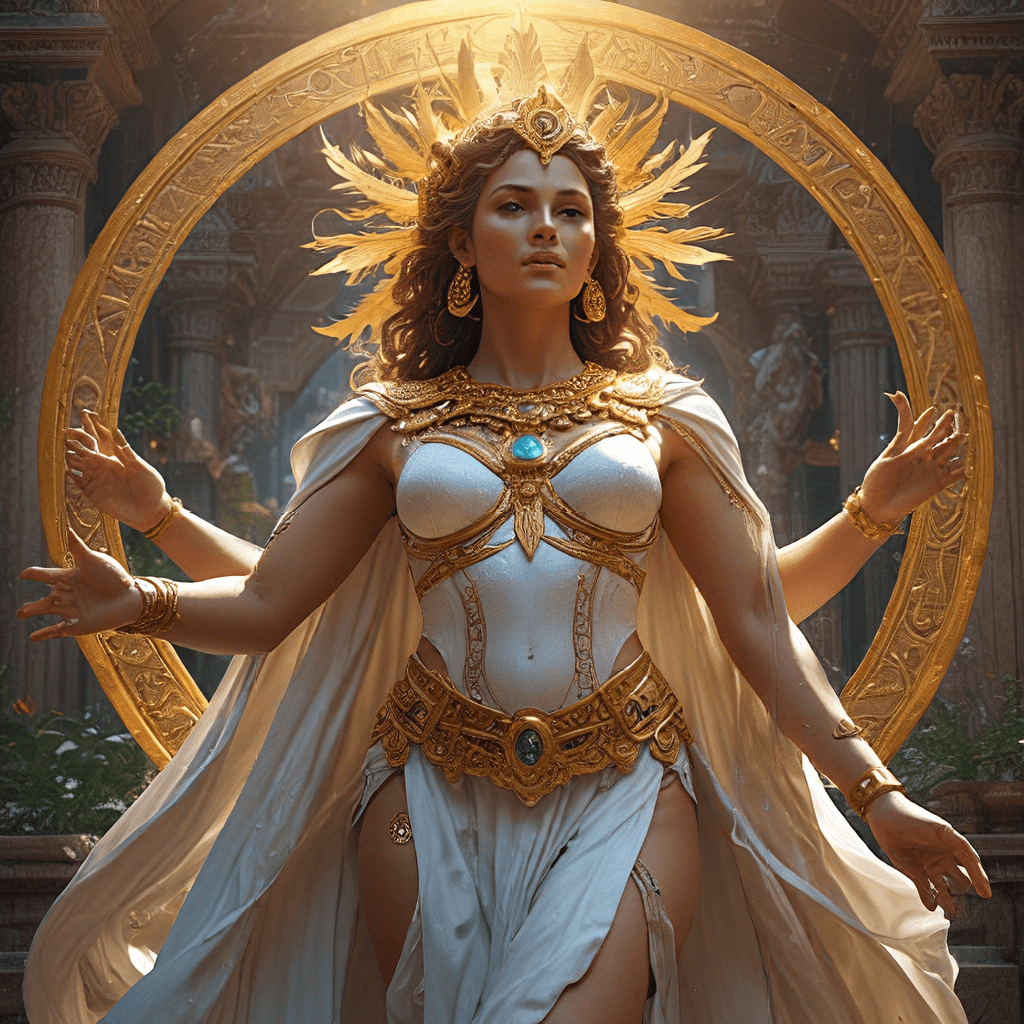1. Introduction: The Cat Goddess
Bast, a prominent deity in ancient Egyptian mythology, is revered as the goddess of fertility, protection, and joy. She is often depicted as a cat, embodying the feline grace, independence, and wisdom that were highly valued in Egyptian society. Cats were considered sacred animals, often associated with Bast and believed to possess magical powers. Their ability to quickly eliminate pests like snakes made them valuable companions and protectors of homes and harvests.
2. Bast’s Origins and Evolution
Bast’s origins can be traced back to the predynastic period of Egypt, where she was initially a lesser goddess associated with the city of Bubastis. Her worship gained momentum during the Old Kingdom period, and as her popularity grew, she became integrated into the broader Egyptian pantheon. By the time of the Middle Kingdom, Bast had transformed into a major deity, her influence spreading across the Nile Valley.
3. Bast’s Domains: Fertility and Protection
Bast’s association with fertility, childbirth, and women’s health stems from the cat’s natural ability to reproduce and nurture its young. She was seen as a protector of pregnant women and newborns, ensuring safe deliveries and healthy offspring. Beyond fertility, Bast was also revered as a protector against evil spirits, diseases, and misfortune. The Egyptians believed her presence brought good fortune, health, and happiness. This belief is reflected in the widespread practice of keeping cats as household guardians and companions.
4. Bast’s Attributes: The Cat, the Lioness, and the Serpent
Bast’s most common representation is as a cat, often depicted with human-like features. This imagery symbolizes her grace, agility, and wisdom. In some depictions, she is shown as a lioness, a powerful predator that reinforces her protective aspects. The lioness also symbolizes Bast’s connection to the sun god Ra, who was often represented as a lion. The serpent, a recurring motif in Egyptian mythology, represents rebirth and renewal, aligning with Bast’s association with fertility and life.
5. The Temple of Bast at Bubastis
The city of Bubastis, located in the Nile Delta, was the primary cult center dedicated to Bast. This ancient city was known for its magnificent temple, a grand complex dedicated to the goddess. This temple served as a focal point for Bast’s worship, drawing pilgrims from across Egypt for religious celebrations and offerings. The temple’s ruins stand as a testament to the enduring legacy of the cat goddess and the importance of her worship in ancient Egypt.
6. Bast’s Festivals and Rituals
The Egyptians celebrated Bast with elaborate festivals, particularly during the month of Paophi, which coincided with the annual flooding of the Nile River. This festival, known as the “Feast of Bast,” involved processions, offerings, and elaborate rituals dedicated to the goddess. The priests would carry a sacred cat statue of Bast through the streets, receiving offerings of food, flowers, and incense from devotees. This festival was a time of great celebration, highlighting the importance of Bast in Egyptian religious life.
7. Bast in Art and Literature
Bast’s presence is evident in various forms of Egyptian art, including statues, paintings, and reliefs. She is often depicted as a beautiful, graceful cat, sometimes with human features, holding a symbol of fertility or protection. Bast features prominently in Egyptian mythology, where she is often portrayed as a protector of the sun god Ra, a symbol of light and life. Her association with music and dance reflects her role as a bringer of joy and celebration. Her story is interwoven into Egyptian mythology, demonstrating the significant role she played in their belief system.
8. Bast’s Connection to the Sun God Ra
Bast’s connection to Ra, the sun god, is significant and multi-faceted. She is often depicted as a guardian of the sun god, protecting him from evil forces. This connection emphasizes her protective nature and her role as a bringer of light and life. The lioness imagery representing Bast further reinforces this connection, as lions were also associated with Ra. This symbolism signifies Bast’s role as a protector and a conduit for solar energy, representing the life-giving power of the sun. Her association with Ra elevates her status within the Egyptian pantheon, making her a powerful and revered deity.
9. Bast’s Legacy: From Ancient Egypt to Modern Culture
Bast’s influence extends beyond ancient Egypt, leaving a lasting impact on modern culture. Her association with cats continues to hold strong, as these animals are often seen as symbols of grace, independence, and protectiveness. Her connection to fertility and protection remains relevant, resonating with modern beliefs about motherhood and well-being. Her image appears in various cultural products, from artwork and jewelry to literature and film, demonstrating her enduring appeal and relevance. Bast is a reminder that the ancient beliefs and stories of Egypt have a profound impact on our understanding of the world and our place in it.
10. Conclusion: The Enduring Power of the Cat Goddess
Bast, the cat goddess, is a figure of great significance and enduring power. She embodies the values held dear by the ancient Egyptians: fertility, protection, and joy. Her influence can be seen in the art, literature, and religious practices of ancient Egypt, and her legacy continues to shape our understanding of these ancient beliefs. Whether viewed as a protector, a bringer of life, or a powerful deity, Bast’s enduring presence speaks volumes about the enduring power of ancient Egyptian mythology and the lasting impact it has on our world.




